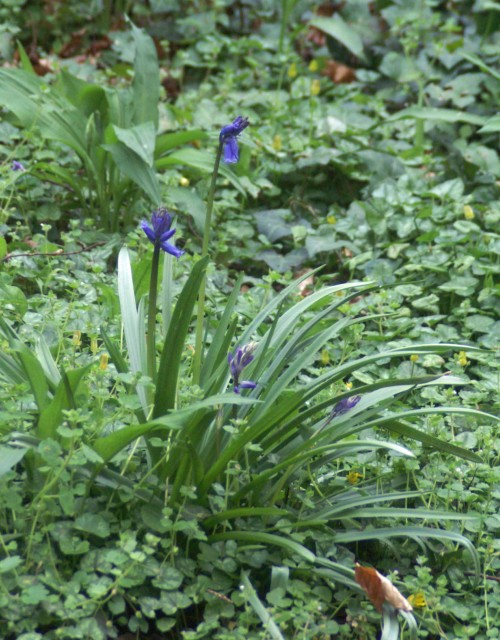Tags
bluebell, chaffinch, Fairy Glen, grey wagtail, long-tailed tit, nesting birds, ramsons, river Colwyn, spring flowers, woodland flowers, woodland walk
Friday seems to have become my day for a walk around the Local Nature Reserve of Fairy Glen, Old Colwyn. It is just a short walk from my current workplace, the busy post office, and very handy for an hour of fresh air and a chance to catch up with the progress of the season. The following pictures are those I took on the last Friday of March in less than an hour.

The horse chestnut leaves have grown significantly since last Friday and there are already flower buds appearing
It was quite a dull, cool day compared with last Friday and shady in the woodland. I didn’t have very long to linger, so I headed straight for the sycamore tree where the nuthatch and blue tit pairs are nesting. I was hoping to get some better views of a nuthatch, but although I could hear the male’s distinctive calling from close by and followed his movements through the trees, he stayed away from the actual nest site. However, the blue tits were working hard furnishing the nest box and I had some lovely views of them both with beaks stuffed with moss.
I carried on along the path, watching out for great tits, a species that I have heard calling and singing and seen here, but that continues to elude my camera. There was a pair flitting about in the trees and shrubbery close to the path, but they don’t stay still or visible for long. I did manage to get a quick shot of the male which is not great but included for the record.
Following after the great tits I stepped off the path a short way and caught a glimpse of bird in a tangle of brambles that turned out to be a male blackcap, yet another species to add to the list for this small area of woodland. He disappeared very quickly and quietly, but then I realised there was another bird in there too, a single long-tailed tit. As I stood watching it emerged from its cover and spent quite a few minutes foraging around the twiggy branches of a nearby small tree, allowing me some lovely close views.
The recent dry and warm weather has been a treat, but the effect of lack of rainfall is very evident in the current shallowness of the river. I wandered along the path, lost in contemplation about water levels and was taken completely by surprise when, rounding a bend I spotted a pair of grey wagtails hunting in the shallow water. I have no idea if this was the same pair that I have seen lower downstream, although I suspect it may be. I watched them flitting gracefully over the water, balancing on small rocks and darting out to chase flies, flashing their yellow underparts as they lived up to their name, wagging their long tails. A man and a dog finally disturbed them and they flew up into nearby trees before heading back downstream.
Where the kingcups are growing there is now also a large clump of yellow flowered arum. This is an exotic plant of South African origin, but clearly flourishing in the boggy ground of this part of the riverbank.
Close by I watched a male chaffinch hunting around an area of shallow water that then flew up into some twiggy shrubbery overhanging the water. He was gorgeous, plump and healthy and with a shiny beak and strong vibrant colours.

The vibrantly coloured chaffinch from the front. Chaffinch – fringilla coelebs; the ‘coelebs’ translates as ‘bachelor bird’.
Further along the path I stopped to watch a subduedly plumaged female chaffinch searching the ground for nesting material. She picked up what I think may be strands of dog hair; holding them in her beak she flew up to a tree branch away from me.












Thank you for putting me right on that, I’m very happy to learn the plant’s true identity and will correct the post accordingly. Best wishes, and thanks again, Theresa
LikeLike
Hi. I just wanted to note that the Arum you photographed is infact Lysichiton americanus (http://apps.rhs.org.uk/plantselector/plant?plantid=1209). It’s an American immigrant, brought over at the turn of the 19th/20th century. I’ve seen them in Lydford Gorge, Devon.
You can tell them apart by the flower shape and spathe mainly.
LikeLike